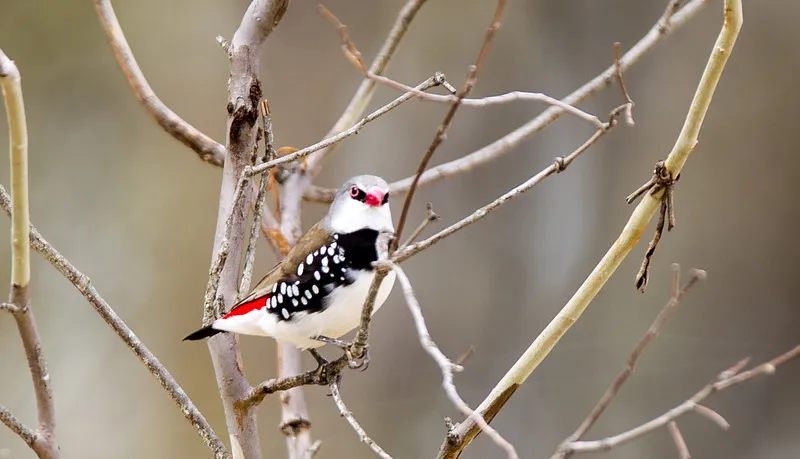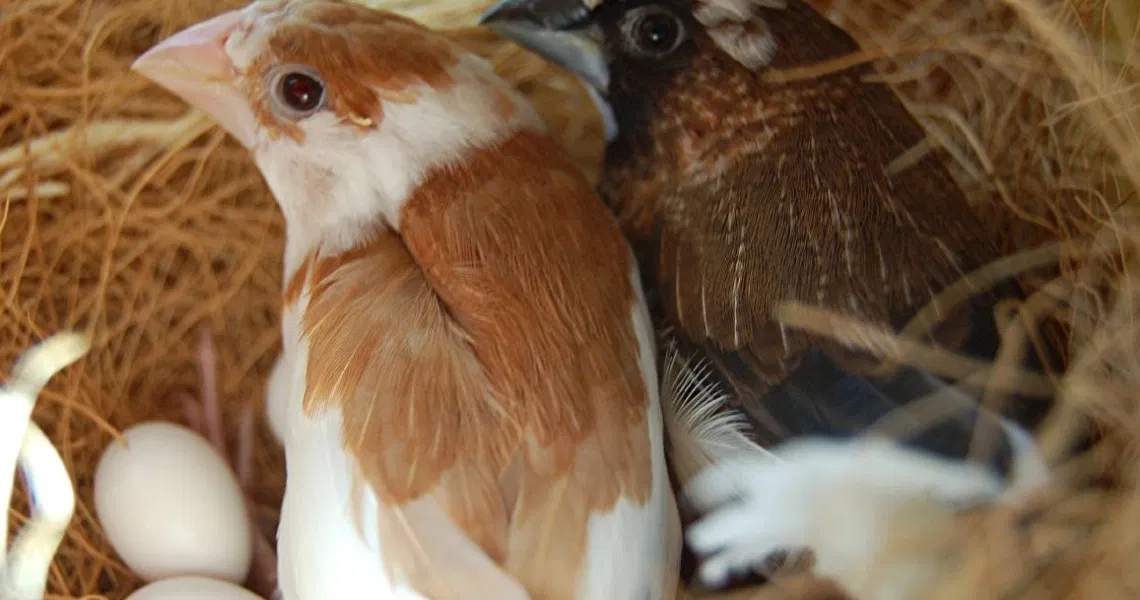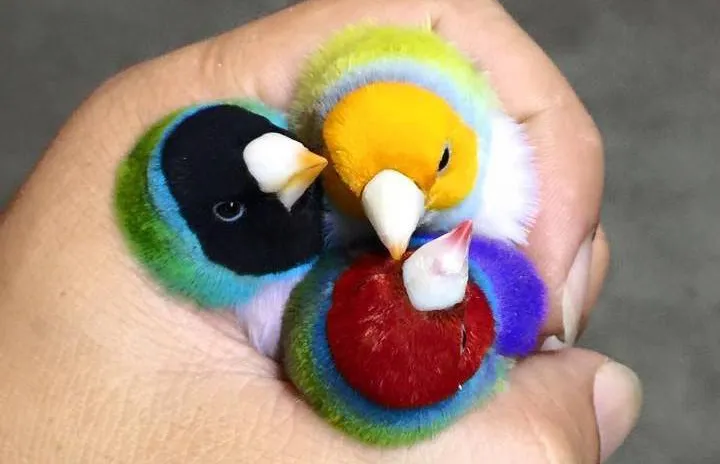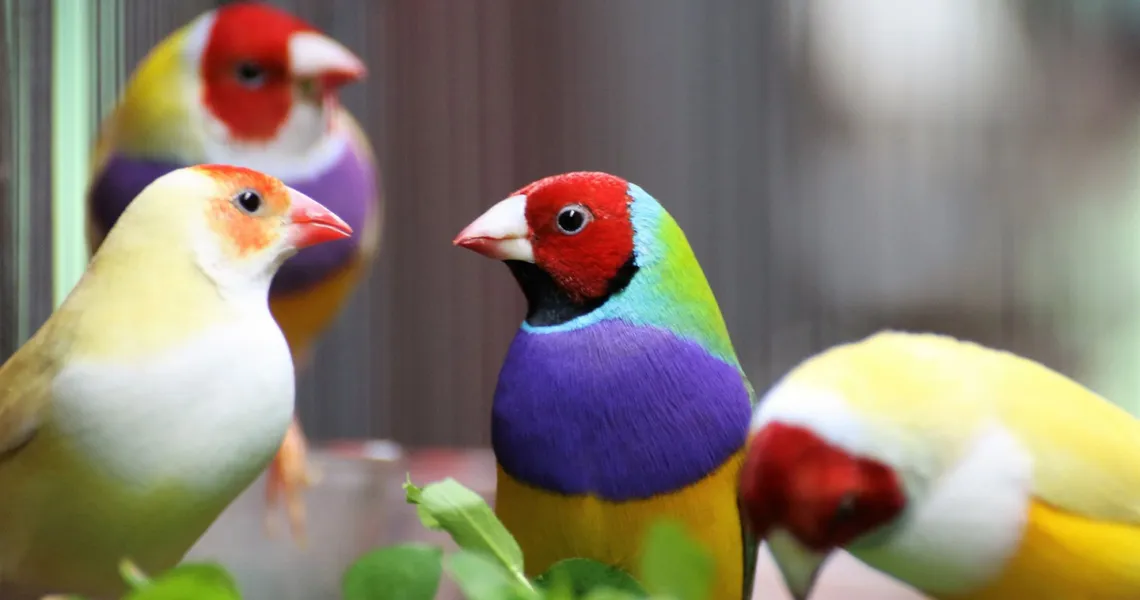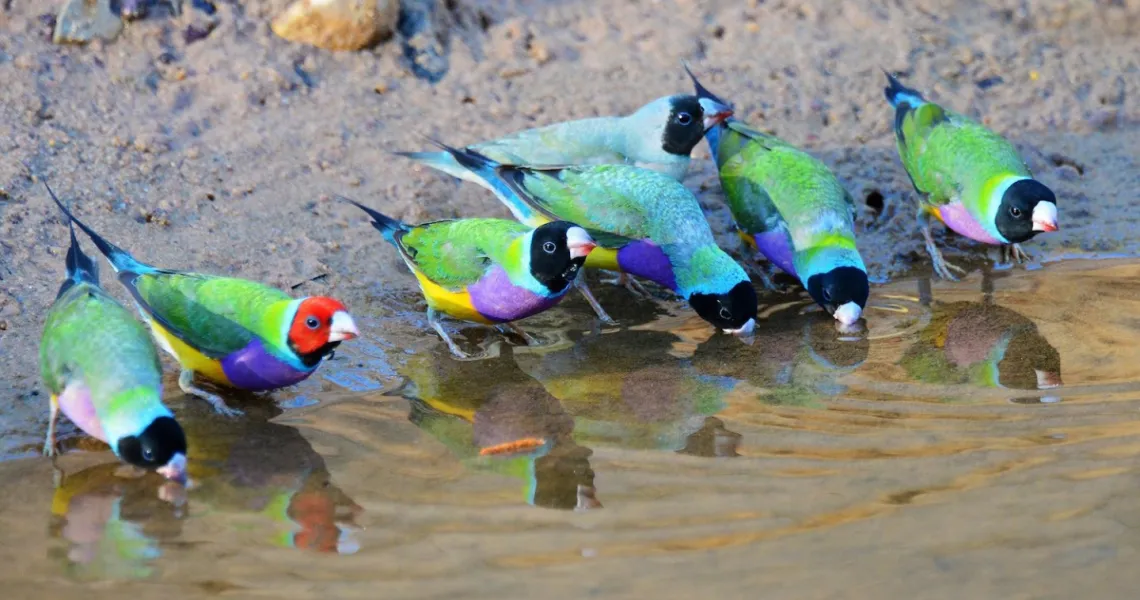
Introduction to Gouldian Finches: What Every New Owner Should Know
By longnkp / Jul 08 2024 / General
The Gouldian Finch, a species endemic to Australia and belonging to the Estrildidae family, was first discovered in 1845 by British naturalist John Gould. Various factors have led to a rapid decline in their wild population since the 20th century. Scientists estimate that only about 2,500 mature individuals remain in the wild. Consequently, it was classified as an endangered species under the IUCN's criteria C2ai in 1992.
In the wild, Gouldian Finches exhibit three head colors: black, red, and orange (yellow). Among these, black is the most common, accounting for approximately 70% of the population, red accounts for 30%, and orange is the rarest, with only about 0.001% (1 in 1,000) of wild Gouldian Finches having an orange head.
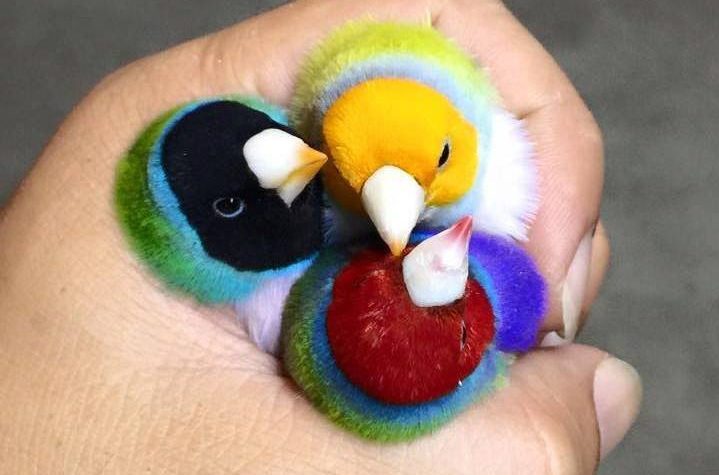
Three head colors in Gouldian Finches (Photo: oiseoux.birds)
Distribution and Habitat
The Gouldian Finch is found in northern Australia, from the Cape York Peninsula through northwest Queensland and the Northern Territory to the Kimberley region of Western Australia. Their habitat consists of subtropical and tropical forests. They typically operate within a relatively small area (about 40 square kilometers) and only move when water or food becomes scarce. The largest known wild population of this species is found in the Bastion Hills, near the town of Wyndham in the eastern Kimberley.
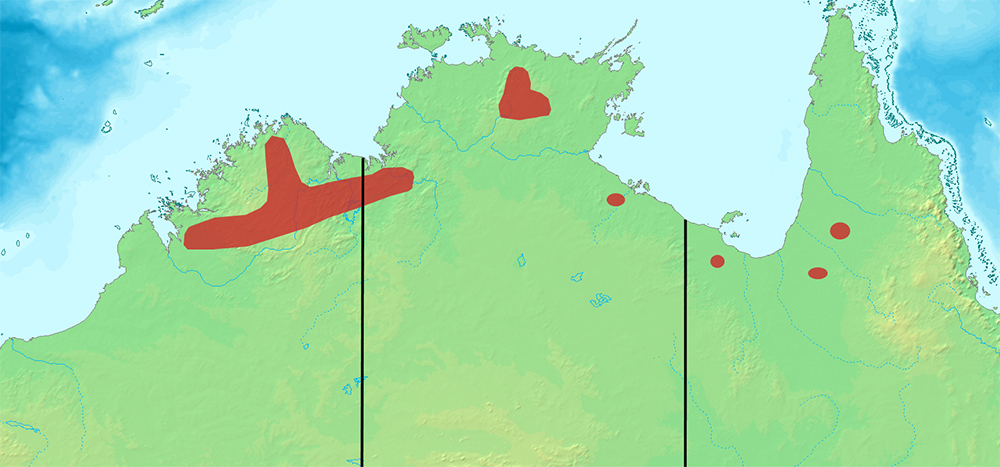
Distribution area of Gouldian Finch in Australia (Image: Wikimedia)
Outside the breeding season, Gouldian Finches often live in mixed flocks with Long-tailed Finches and Masked Finches. Each mixed flock typically contains between 1,000 and 2,000 individuals. This behavior may serve as a defense mechanism against predators. During the breeding season, they are usually found on rugged slopes with sparse vegetation. In the dry season, they tend to be more nomadic and will move to wherever food and water are abundant.
Before the Australian government banned animal exports in 1959, Gouldian Finches were exported worldwide. This allowed breeders in other countries to own and maintain this beautiful species native to Australia. Selective breeding has led to the appearance of several variations in back color and two variations in breast color.
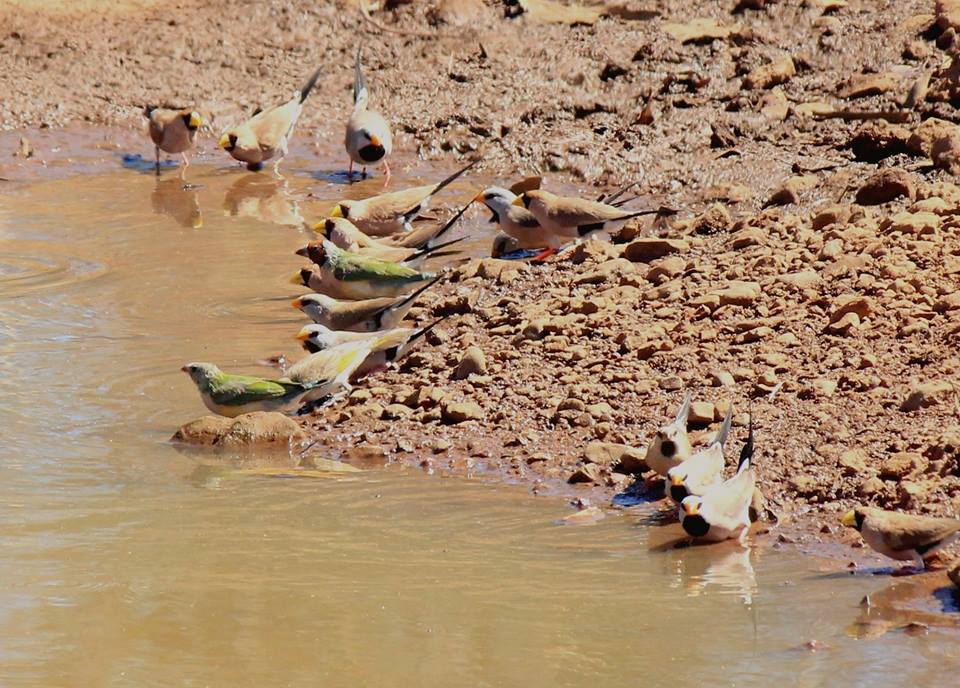
Mixed flock of Gouldian Finches, Long-tailed Finches, and Masked Finches (Photo: Ronda Crerar)
Food
In the wild, Gouldian finches primarily feed on grass seeds. In captivity, caretakers can provide them with canary seeds, millet seeds, and specialized finch seed mixes. Learn more about finch nutrition in the Nutrition section.
Breeding
The Gouldian finches typically nest in caves and tree hollows. Each clutch laid by the female consists of 4-8 eggs. The female spends most of her time incubating the eggs, while the male stands guard outside the nest and takes turns in incubating when the female leaves to forage. Eggs hatch after approximately 14 days of incubation, and both parents participate in feeding the chicks. Gouldian finch chicks fledge around 19 to 23 days old, but they remain dependent on parental care until about 40 days old when they can fend for themselves and forage independently.
Female Gouldian finches and newly hatched chicks
Distinguishing between males and females
Distinguishing between genders in Gouldian Finches is relatively straightforward through external characteristics. Males typically exhibit brighter and more intense feather colors compared to females, with distinct patches of color on their bodies. Males also have longer tail feathers at the center and often sing frequently once mature. Female Gouldian Finches have duller and paler plumage compared to males, and during the breeding season, their beaks gradually turn black. Captive Gouldian Finches have an average lifespan of 5-6 years, but with proper care, they can live up to over 9 years. For more detailed guidance on gender identification in Gouldian Finches, you can read the article How to Gender Lady Gouldian Finch
Relative Posts
Recent Posts
- Unlocking the Secrets of Calcium for Healthy Captive Birds
- Hand Feeding Finches
- Why Parents Toss Chicks and How to Help
- Fostering Finches: Ensuring the Survival of Your Feathered Friends
- Sunshine and Finches: A Guide for Indoor Bird Keepers
- Air Sac Mites in Finches: Understanding, Preventing, and Treating
- Introducing New Foods to Your Finch
- Homemade Finch Food Recipes
- Choosing Breeding Gouldian Finch Pairs
- How to Choose a Nest Box for Your Finches

